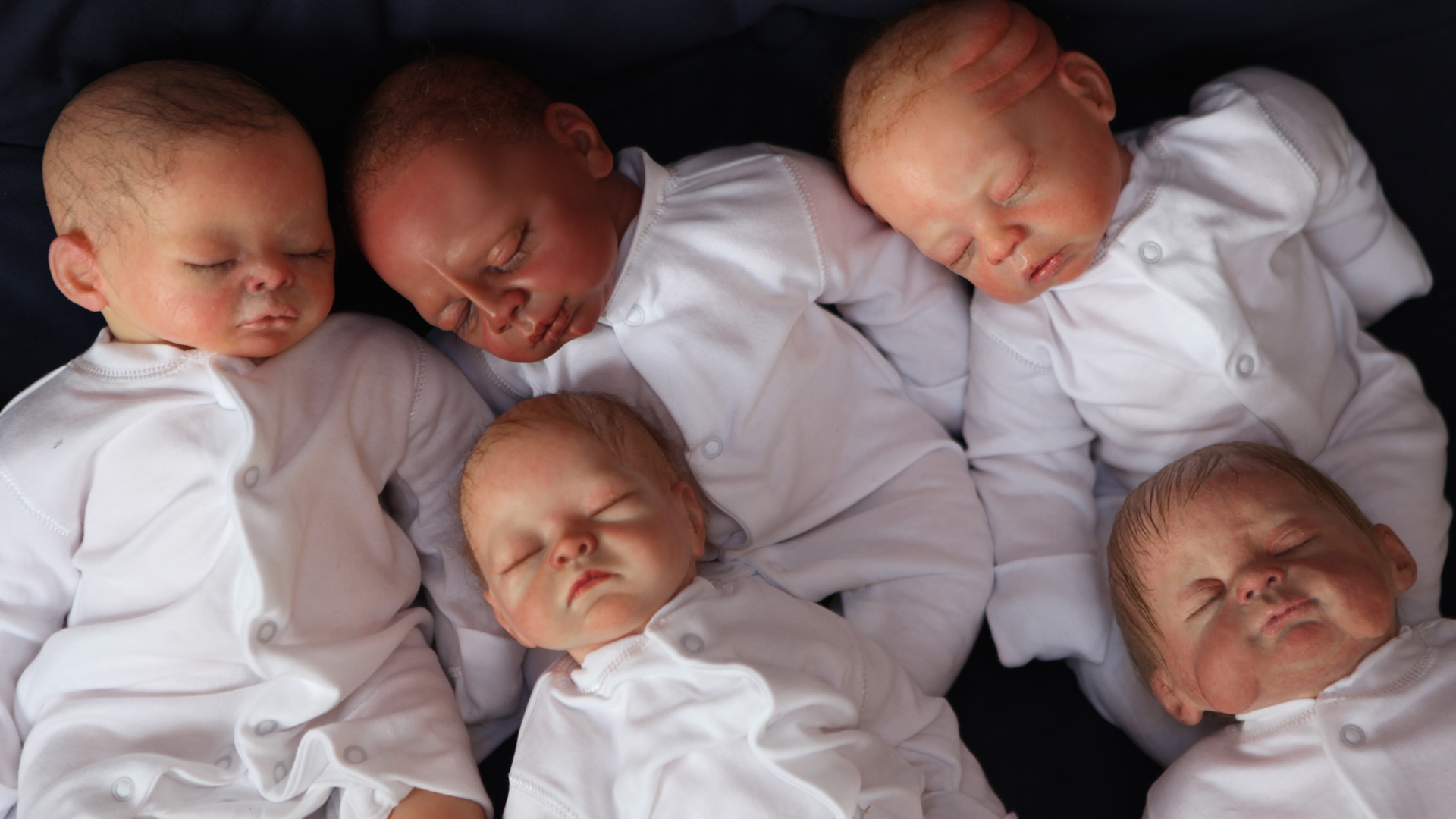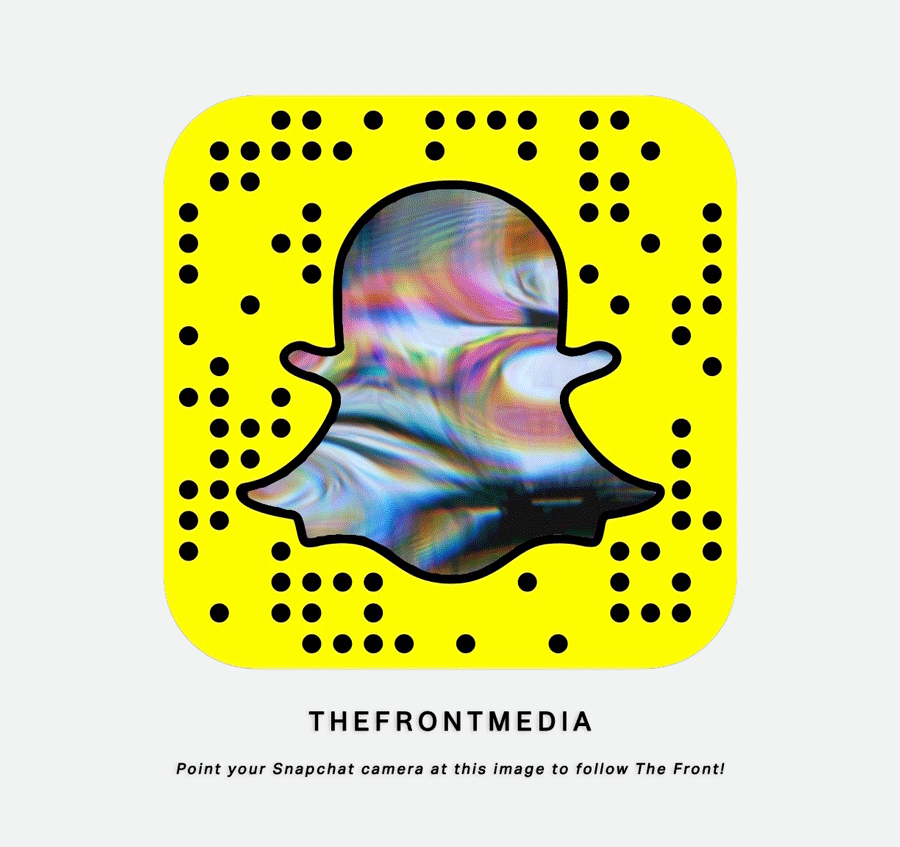AGI HAINES: Re-Designing The Human Race
Agi Haines’ mind-bending, hyperreal sculptures function in an epistemological limbo, existing somewhere between art and science, technology and ethics, and present and future. Haines creates pieces that are uncanny, transgressive, and sometimes conflicting, stunning in their insight and repulsive in their execution.
Meet the visual artist exploring biohacking to improve mankind.
Her near-future world is one in which rattlesnake muscles can be 3D-printed, inserted into the human body and used to combat cystic fibrosis; it is one where new orifices are surgically created in newborns to give them evolutionary advantages. Her new show, “Dissecting Medical Futures” starts this month, and continues in this astounding, speculative vein forcing us to confront disconcerting questions about the limits and potential of human existence.

What is a speculative designer and why did you choose that term to describe yourself?
AGI: ‘Speculative design’ is an aspect of design where the focus is not so much on the production of products, but on considering the affect of design itself- for my work in particular this affect is about the role of design in the future of biomedical and healthcare technologies. My association with speculative design grew from my tuition under Dunne and Raby, who coined the term and promoted this kind of critique within design practice. Although my work could fit amongst differing design disciplines, my decision to use this term to describe my work is to keep the association within an ethos of speculative research.
Why is speculation important today more than ever?
Speculation is an incredibly important tool within professional practice and everyday life, imagining “what may happen when…” or “if only…” is not only a preparation technique but also one that is the basis of most research enquiries. It is just as important to speculate upon living on another planet, as it is to speculate upon falling over on the way to work. Speculation is an integral part of curiosity that encourages a forward-looking approach to research.
When did the human body become your medium and why?
I have always had a fascination with the human body- we are very unusual creatures and we know very little about ourselves. I think art and design has a history of attempting to unpack the anatomy of the human body in a way that has been integral to science and vice versa, not only through anatomical modeling and atlas-making but also through comprehending the design and function of the body. I am not sure if I could pinpoint when it became a medium for me, in fact I think this has probably always been my interest, and I always respected people who could view materials differently.
Is your work art or science? Is there a distinction between the two?
My background is in art and design, so its exposure is usually within traditional exhibition settings like talks, papers and conferences. Although through my PhD research at CogNovo, I am trying to connect it to the professional biomedical and healthcare domain. I am not generating products or scientific data, so it’s difficult to define. I think in both fields it is regarded as speculation, and this is important as I hope I may be able to formulate a reflective experience for both designers and scientists, regarding their roles in the future of biomedical technologies.

How has gender influenced your view of the body? And what role does gender play in your future of body modification?
Gender is really interesting anatomically; although there also can be huge differences between members of the same sex. I have never really created a focus upon a particular gender, and have not researched gender greatly. Rather I often aim to allow people to contemplate their own bodies and hope this can be an inclusive experience.
Do you think motherhood / parenthood changes dramatically in the future when we are able to modify our children to be better, faster, stronger?
I think we have always been modifying our children, there just seem to be fashions that make new modifications seem more unusual. Giving them more calcium for stronger bones or even something more extreme such as circumcision is a modification that we don’t really imagine as strange anymore. I think what is becoming more visible is the ability to modify our children at a different stage- for example people are becoming more aware of how their actions when they are developing could affect their children, as well as how alterations can be made in the womb. So I think the change will not be dramatic but rather developmental, as it always has been.
How do most people respond to your work? Why do you think that most people are uncomfortable with flesh, the human body, our organs? Do you think it’s a primal reaction or a consequence of civilization?
I think we do grow up to develop an amazing disgust response that can benefit us in many situations- and contact with another persons viscera can cause a lot of problems that we should probably be taught to avoid! But this all depends on where you are from in the world and when you grew up. For example I am very lucky to have grown up in a place with an amazing sewage system so my interaction with bodily waste is perhaps very different to someone who has grown up in a different part of the world without this luxury; their knowledge of the interaction with such a material would be much more developed than someone like myself.
Becoming distanced from the flesh and body is a comfort that seems to have developed in countries that have a developed healthcare system that means problems can be dealt with so the patient can have as little interaction with them as possible. Unfortunately, the decision to have modifications is also completely dependent on wealth- I imagine if some of these kinds of operations were to become a reality it would become another luxury that I doubt would be paid for by the government. Perhaps the exception to this would be alterations that may have significant health benefits, like we can now see with many forms of plastic surgery.
In places such as the UK, with a developed healthcare structure, the body does now seem to be viewed as a closed system, in which the internal processes that facilitate modifications are hidden from the patient. I am not sure if this is the only reason why people are disturbed by some of my work, I think it may also be because people are incredibly empathetic, and imagine the surgeries being done on themselves. This seems to invoke fear!

What attracts you to the grotesque? Are you a fan of horror or sci-fi?
Yes, I do like horror and sci-fi- these genres are fantastic at encouraging speculation regarding the future body. Because they specifically deal in the manufacture of fear and disgust to create visceral responses, they are integral from a design perspective to imagine how audiences may respond to certain visuals. I also find how the body is dealt with in the sciences fascinating, and feel like this amazingly visual work should be exposed in order to open up certain questions that are perhaps not always instantly visible to professional audiences.
Are humans really trying to achieve immortality? will they?
Some researchers are definitely looking into this; the answer is I am not too sure, although I think our bodies probably have a ‘sell by’ date for a reason! The fact life is perishable makes it really intense and fascinating, I imagine we would be very different creatures with different agency if we lived longer. The purpose of Circumventive Organs, like most medical interventions is to circumvent natural selection… the desire to alter your body in such a way is not necessarily to avoid death in general but to avoid a certain type of death which involves illness and pain. I would suggest looking at Jaemin Paik’s work ‘when we all live to 150’, where she imagines how social systems might change as a result of an elongated life.
Is there a place for spirituality in your work? How is it expressed?
These projects often look at the body in a very mechanical way; the procedures seem logical and systematic, although the decisions to include them into your body are not. I think making a decision as to what defines the boundaries of the body is a very spiritual question and it differs greatly between people- some see the use of a car as an extension of the body, whereas others see gut bacteria as alien. I am really interested in when and why does something become a part of you? This is perhaps explored more overtly in the project ‘Drones with Desires’ in which we tried to imagine at what point might a robot be considered to be representative of ‘me’ through the decisions it makes.
If you could have one superpower, which one would you choose and why?
This is an incredibly difficult question, as I can think of endless things I wish I could do or change! Without all the obvious answers such as ‘I wish I could fly’ or ‘read minds’, I imagine the ability to make people comfortable and content would be amazing… although becoming a Genie is perhaps something that is less attainable, by the body!

Name the woman who’s most impacted your work and/or worldview.
This may be an answer you receive often but my mother Gillian Watson has been the main influence on my work. She has an immense knowledge of art and design history, with a background in set design, painting and antique restoration and history. She developed an extremely unusual artistic style that really was much before its time, and my interest in the human figure probably developed from experiencing her previous work, and her own research into the sculptural human form. Her artistic research involved using sculptural techniques to quantify the physical self- something that is a major factor in my own work. I am proud now to be developing ideas that may have somehow seeped through to me in my upbringing.
Check out more of Agi’s work at her website.








